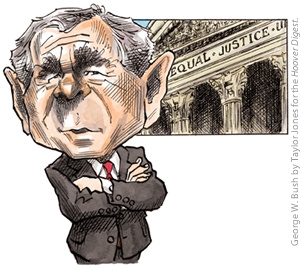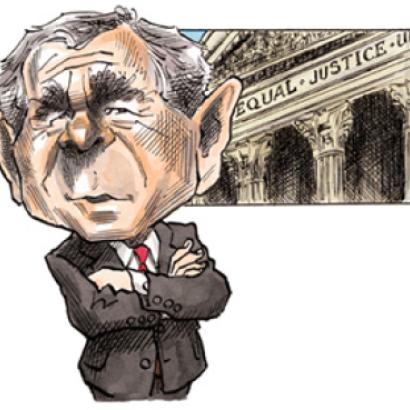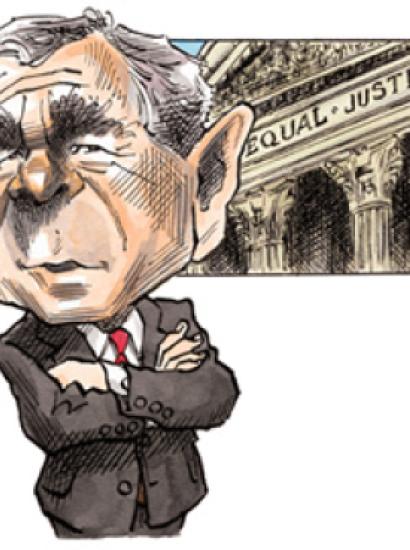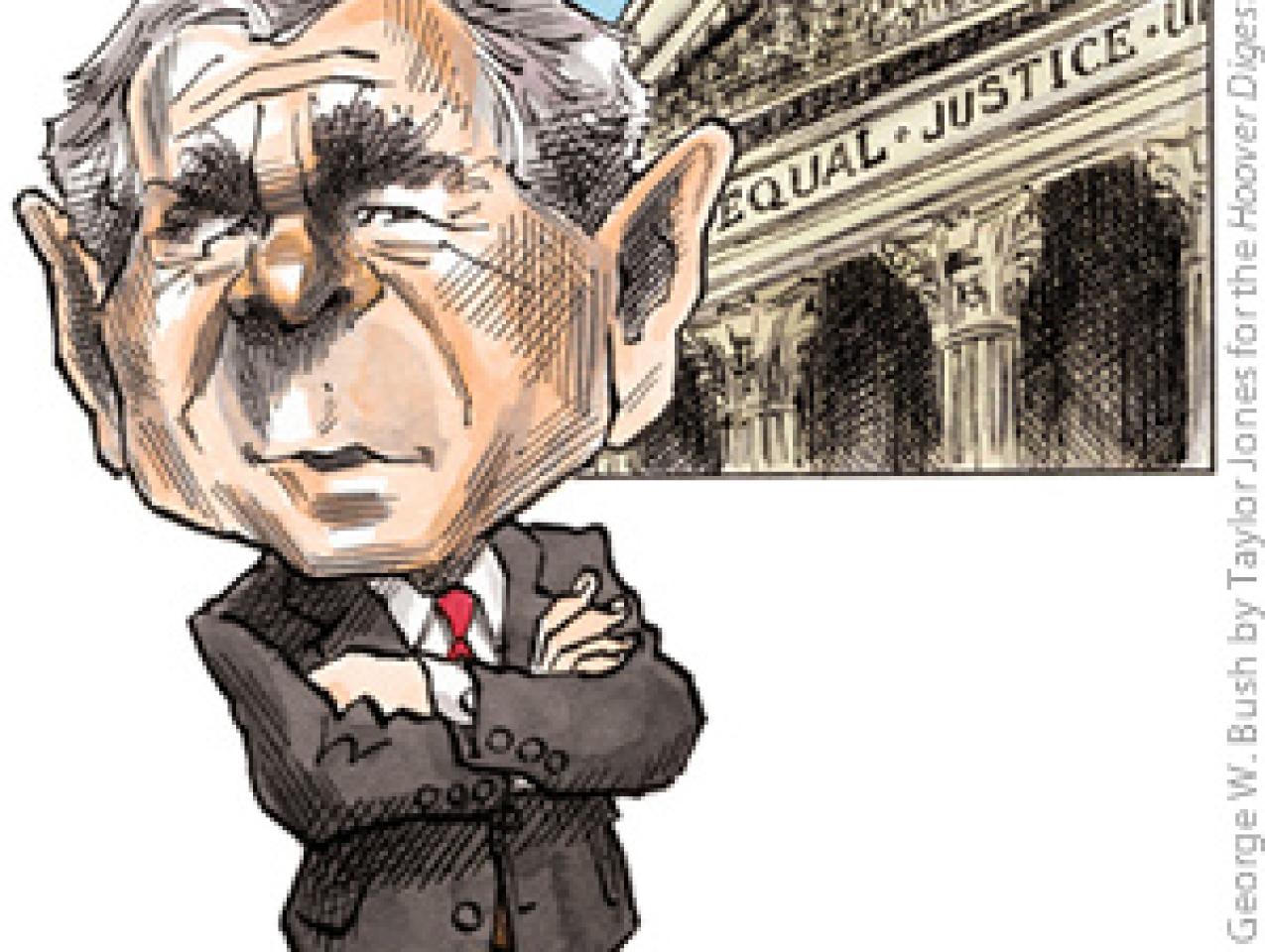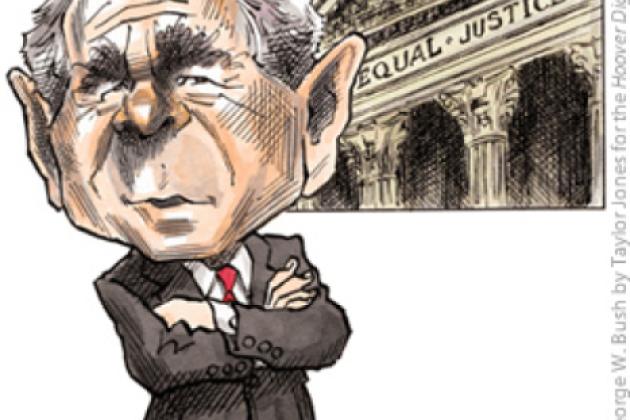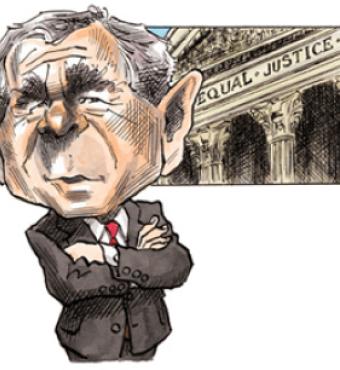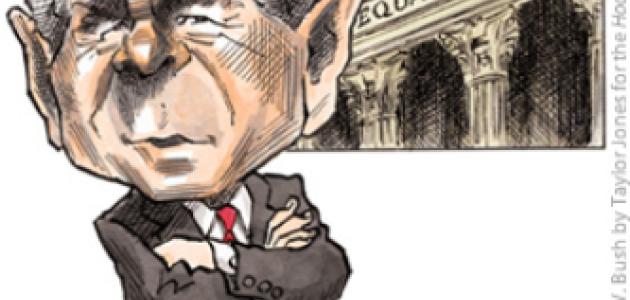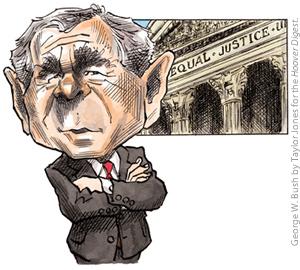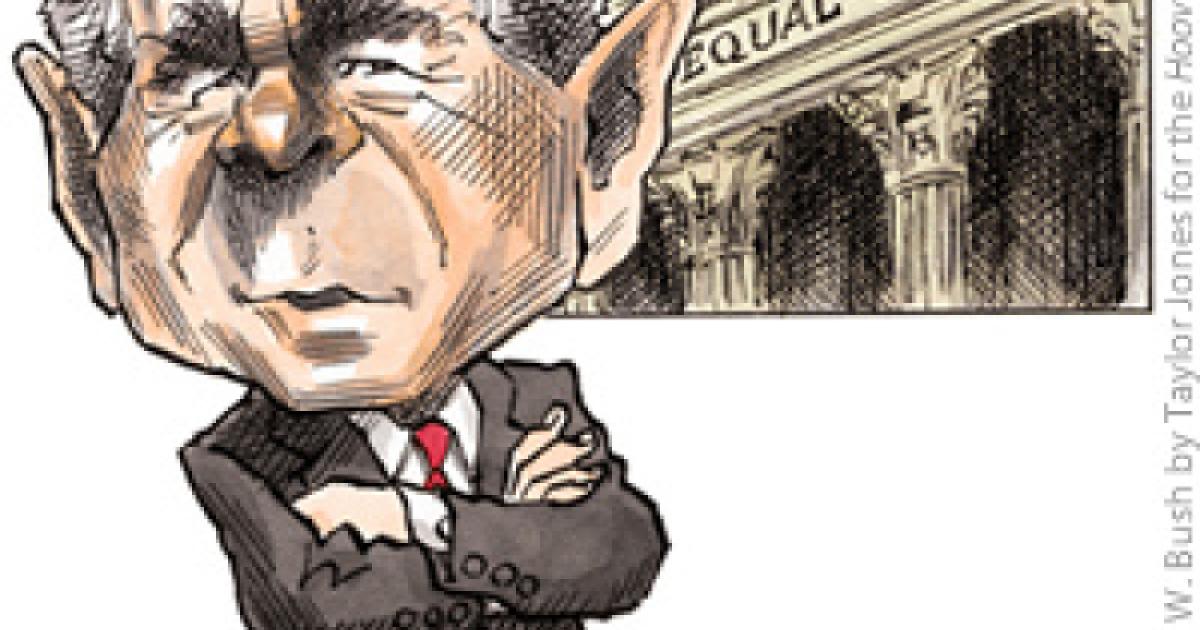- The Presidency
- Law & Policy
- Politics, Institutions, and Public Opinion
The partisan battles over confirmation hearings have surely spun out of control. With each new presidency since Jimmy Carter’s, the time for confirmation gets ever longer and the fraction of nominees that runs the gauntlet gets ever smaller. Most of these pitched battles are familiar party struggles between Republicans and Democrats over such matters as abortion and affirmative action.
Nonetheless, a second division in sentiment, which takes place largely within the ranks of the Republican Party, should not be overlooked in the current anxiety about judicial nominations. Part of the genius of Ronald Reagan was his ability to balance off the tension between the libertarian and social-conservative wings of the Republican Party. The differences between them are in many cases quite profound. Social conservatives may have great affection for judicial restraint, but libertarians usually do not. And the difference shows on key issues that really matter to the long-term social agenda. Let me mention just three that are now before the Court.
Social conservatives are willing to champion highly expansive readings of federal power to fight a drug war that looks counterproductive to say the least. Libertarians (like me) are depressed at how, in Ashcroft v. Raich (2004), a Republican administration is invoking in its struggle New Deal precedents (most notably Wickard v. Filburn in 1942, which allowed federal officials, in their efforts to rig grain markets, to treat grain fed to one’s own cows as commerce “among the several states”). Competition among states is one of the best ways to limit government power, which cannot happen when the federal government can instantly take up the slack. A similar story took place on issues of individual rights. Justice O’Connor was one of the coauthors of a misguided opinion in McConnell v. Federal Election Commission (2003) that upheld the extensive network of restrictions on free speech, with a direct appeal to the Progressive tradition. Later this term, in Kelo v. New London, it is an open question whether the left and the right on this Supreme Court will again unite to allow powerful local governments to bulldoze private homes with the bare chance that the land taken might someday be used for a project with some indirect benefit.
These three cases reveal a deep tension that could be replicated on other hot-button issues. President Bush is right to insist that the justices of the Supreme Court not impose their personal preferences on society in deciding the great cases of our times. But he is wrong to assume that fidelity in interpretation necessarily results in giving full sway to broad federal powers, on the one hand, and little protection of individual rights against federal and state intervention, on the other. No explicit provision in the Constitution commands either judicial restraint or judicial activism. A full range of strong structural and individual guarantees was intended to place major limitations on government power. Sound interpretation should respect that commitment. That result is no mistake; the Framers wanted a Constitution that threaded the needle between public institutions too weak to govern, such as the Articles of Confederation, and those that are too strong, which would snuff out all our private liberties and initiatives.
The moral seems clear. Recognize that more than one strand falls under the overbroad label of conservative. And by all means pick a mix of judges for the Supreme Court and lower courts, for diversification is a good strategy for judicial appointments as it is everywhere else. But please, Mr. President, remember that a sound mix includes judges who hold up the libertarian wing of the Republican tradition. That wing has a vital role to play in preserving the welfare of the nation.
